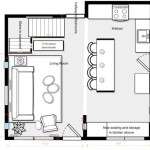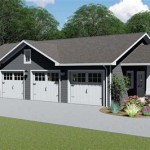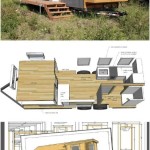Water Well Pump House Plans: A Comprehensive Guide
Building a well pump house requires careful planning and consideration. A well-designed pump house protects vital equipment from the elements, ensures proper functionality, and enhances the aesthetic appeal of a property. This guide explores key aspects of water well pump house plans, providing valuable insights for homeowners and builders.
Determining Pump House Size and Location
The size and location of a pump house are crucial factors influencing functionality and efficiency. Several factors contribute to these decisions:
*Pump and Tank Size:
The dimensions of the well pump and pressure tank dictate the minimum internal space required. Adequate clearance around the equipment is essential for maintenance and repairs. *Future Expansion:
Planning for potential future upgrades or additions to the well system, such as water treatment equipment, is crucial for avoiding costly renovations later. *Accessibility:
Easy access to the pump house is essential for routine maintenance and emergency repairs. Locating the pump house near the wellhead simplifies plumbing and electrical connections. *Local Codes and Regulations:
Adhering to local building codes and zoning ordinances is mandatory. These regulations often specify setbacks from property lines and other structures, affecting the pump house location. *Climate Considerations:
The local climate plays a significant role in determining the necessary insulation and ventilation requirements for the pump house. Protection from freezing temperatures is vital in colder climates.Essential Components of a Well Pump House Plan
A comprehensive well pump house plan should address several key components:
*Foundation:
A solid, level foundation is essential for the stability and longevity of the pump house. Concrete slabs are commonly used, providing a durable and waterproof base. *Framing and Siding:
The framing should be robust enough to withstand wind and snow loads. Durable siding materials, such as wood, vinyl, or metal, protect the interior from the elements. *Roofing:
A properly installed roof protects the equipment from rain and snow. Sloped roofs are preferable for shedding water and preventing accumulation. *Insulation and Ventilation:
Proper insulation minimizes temperature fluctuations, protecting the pump and tank from freezing and overheating. Ventilation prevents condensation and mildew buildup. *Electrical Wiring:
A dedicated electrical circuit with appropriate grounding and overcurrent protection is necessary for powering the well pump. Wiring should comply with local electrical codes. *Plumbing:
Properly sized and insulated plumbing connections prevent leaks and ensure efficient water flow. Check valves and pressure relief valves are vital safety components. *Access Door and Lighting:
A sturdy access door allows easy entry for maintenance. Adequate lighting within the pump house facilitates inspections and repairs.Choosing Materials for Construction
Material selection impacts the durability, aesthetics, and cost of the pump house. Common materials include:
*Wood:
Wood framing and siding offer a classic look but require regular maintenance to prevent rot and insect damage. Pressure-treated lumber is recommended for enhanced durability. *Vinyl:
Vinyl siding requires minimal maintenance and offers excellent weather resistance. It is available in various colors and styles, providing design flexibility. *Metal:
Metal siding and roofing are highly durable and fire-resistant. They require less maintenance than wood but can be prone to dents and scratches. *Concrete:
Concrete block construction provides excellent insulation and durability. It is a fire-resistant option but can be more expensive than other materials.Developing a Site Plan
A well-planned site layout is essential for efficient construction and functionality. Consider the following:
*Grading and Drainage:
Ensure proper grading around the pump house to prevent water accumulation and potential flooding. Install drainage systems to direct water away from the foundation. *Utility Connections:
Plan the location of electrical and plumbing connections for easy installation and access. Mark underground utility lines to avoid damage during construction. *Landscaping:
Consider landscaping around the pump house to enhance its aesthetic appeal and integrate it into the surrounding environment.Budgeting for Pump House Construction
Developing a realistic budget is crucial before starting construction. Several factors influence the overall cost:
*Size and Materials:
Larger pump houses require more materials, increasing the cost. Choosing premium materials also adds to the expense. *Labor Costs:
Hiring professional contractors for site preparation, foundation work, framing, and electrical and plumbing installations contributes significantly to the overall cost. *Permitting Fees:
Obtaining necessary building permits from local authorities involves associated fees that should be factored into the budget.Seeking Professional Assistance
Consulting with experienced professionals is advisable throughout the planning and construction process. Their expertise ensures a well-designed and functional pump house:
*Well Drilling Contractors:
Well drillers can provide valuable insights into the well's characteristics and recommend appropriate pump and tank sizes, influencing the pump house dimensions. *Building Contractors:
Experienced building contractors can assist with site preparation, foundation work, framing, and finishing, ensuring structural integrity and compliance with building codes. *Electricians and Plumbers:
Licensed electricians and plumbers can handle the electrical wiring and plumbing installations, ensuring safe and efficient operation of the well system.Maintaining the Pump House
Regular maintenance is essential to ensure the longevity and efficient operation of the well pump system and the pump house itself:
*Inspecting for Leaks and Damage:
Regular inspections of the pump house interior and exterior can identify potential issues like leaks, cracks in the foundation, or damage to the siding. Addressing these issues promptly prevents further deterioration. *Cleaning and Debris Removal:
Keeping the pump house clean and free of debris prevents pest infestations and ensures proper ventilation. Regularly remove leaves, cobwebs, and other debris that accumulate inside and around the structure. *Checking Electrical and Plumbing Connections:
Periodically check electrical connections for tightness and signs of corrosion. Inspect plumbing pipes and fittings for leaks and ensure proper insulation to prevent freezing in colder climates. *Maintaining the Well Pump:
Follow the manufacturer's recommendations for regular maintenance of the well pump, including lubrication and periodic inspections. This helps prevent premature failure and ensures optimal performance.
Pump House For Well Plans Water

Well House Design

33 Well House Ideas Pump Water Cover

Pumphouse An Overview Sciencedirect Topics

Well Pump Enclosure How To Find The Right One

How To Build A Pump House Shed Small Woodworking Projects Water Well

Into The Woods Water

Pump House Sheds Http Howardwatersystems Com Need 20to 20know Water Well Shed Plans

Prepper Pump House

How To Design A Submersible Wastewater Pump Station








